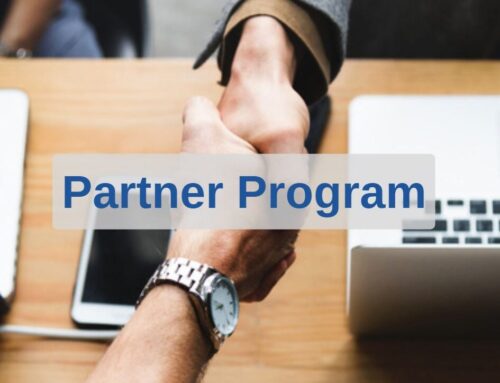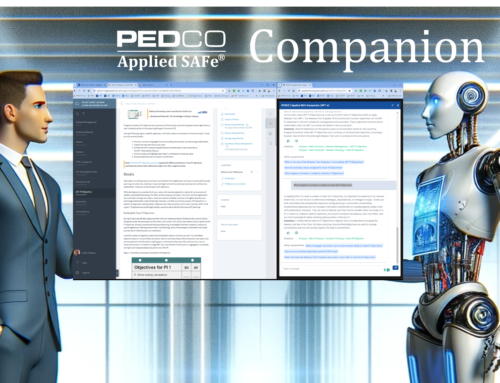Recently, I met with a company’s key stakeholder on quality, and we discussed the possibility of their organization transitioning towards the Scaled Agile Framework (SAFe) and integrating their existing Total Quality Management (TQM) implementation with SAFe.
The following is a summary of our discussion of potential integration of TQM and SAFe at their company.
Conceptual differences between TQM and SAFe
We briefly talked about the differences between TQM (Total Quality Management) and SAFe (Scaled Agile Framework). We laid out the two distinct methodologies used in the field. Here’s an overview of each:
TQM (Total Quality Management):
Total Quality Management (TQM) is a management approach that focuses on continuous improvement, customer satisfaction, and defect prevention. It involves all members of an organization in a systematic and structured process to achieve excellence in quality.
- TQM is a management approach that focuses on improving the quality and efficiency of an organization’s processes and products.
- It was developed in the mid-20th century and gained popularity in the 1980s and 1990s.
- TQM emphasizes continuous improvement, customer focus, employee involvement, and data-driven decision-making.
- It typically involves tools and techniques like Six Sigma, Lean, and PDCA (Plan-Do-Check-Act) cycles.
SAFe (Scaled Agile Framework):
Scaled Agile Framework (SAFe) is a set of principles and practices for implementing agile methodologies at the enterprise level. It provides a structured approach to align teams, improve collaboration, and deliver value faster, while maintaining high quality standards.
- SAFe is a framework for scaling Agile practices in larger organizations. It provides a set of organization and workflow patterns intended to guide enterprises in scaling lean and agile practices.
- It was developed to help organizations address the challenges of coordinating and delivering value across multiple Agile teams and larger projects.
- SAFe includes roles, responsibilities, events, and artifacts that provide guidance on how to apply Agile principles at scale.
- It’s particularly popular in software development and other industries where Agile methodologies are used.
In summary, TQM is a quality management philosophy that focuses on process and product improvement, while SAFe is a framework for scaling Agile practices to manage large-scale projects and align them with business objectives. They serve different purposes and are often used in different contexts, but both aim to improve efficiency and quality in their respective domains.
Can the existing TQM implementation combined with SAFe?
The integration of TQM and SAFe brings numerous benefits to organizations, including improved quality, increased customer satisfaction, enhanced agility, better teamwork, and higher productivity. By leveraging the strengths of both approaches, organizations can achieve excellence in quality and agility.
We then discussed what it would need to combine elements of both Total Quality Management (TQM) and the Scaled Agile Framework (SAFe). We concluded that creating a tailored approach suits their organization’s specific needs and goals. Combining these two approaches promises to be advantageous for this larger organization that wants to emphasize quality management while implementing Agile practices at scale.
Here is a possible script we discussed to combine TQM and SAFe:
- Quality Integration within SAFe: You can integrate TQM principles and quality management practices into your SAFe implementation. Emphasize the importance of continuous improvement, customer focus, and data-driven decision-making within the SAFe framework.
- Lean and Six Sigma Principles: Lean and Six Sigma, which are often associated with TQM, can complement SAFe practices. Lean principles can help eliminate waste in your Agile processes, while Six Sigma can be used to reduce defects and improve product quality.
- Collaborative Problem-Solving: Encourage cross-functional teams in SAFe to work together on identifying and resolving quality issues. This aligns with TQM’s principle of involving employees in continuous improvement efforts.
- Data-Driven Decision-Making: Incorporate data collection and analysis into SAFe processes to measure and improve quality. Use metrics and key performance indicators to inform decision-making, which is a core aspect of TQM.
- Leadership Commitment: Promote strong leadership commitment to quality within the SAFe framework. TQM often emphasizes the role of leadership in driving quality initiatives, and this can align with SAFe’s concept of leadership support for Agile transformation.
- Training and Development: Invest in employee training and development to ensure they have the necessary skills and knowledge to contribute to Agile and quality improvement efforts.
- Continuous Improvement Events: Implement TQM-inspired events like Kaizen (continuous improvement) workshops or quality circles within SAFe to foster a culture of continuous improvement.
- Feedback Loops: Create feedback loops within SAFe to capture input from both customers and team members, emphasizing the importance of customer satisfaction and employee involvement.
While combining TQM and SAFe can be beneficial, ensuring that the integration is well-planned and aligns with your organization’s specific goals is essential.
Conclusion
We concluded that several points of synergy between TQM and SAFe can be leveraged to improve the overall quality and efficiency of their endeavors. Key areas of alignment discussed included:
- Customer-Centric Approach: Both TQM and SAFe emphasize the importance of customer satisfaction. We discussed the need to continue placing customers at the center of their efforts and how this shared focus aligns with SAFe’s customer-centric approach.
- Process Improvement and Lean Thinking: TQM’s continuous improvement principles complement SAFe’s Lean-Agile practices. The company can apply TQM’s process management and problem-solving tools to drive incremental enhancements within SAFe’s agile processes.
- Data-Driven Decision Making: TQM’s emphasis on data analysis and metrics can be integrated into SAFe to enhance performance visibility and facilitate data-driven decision-making at all levels of the organization.
- Quality Control and Assurance: The quality assurance practices in TQM can be used to set standards and ensure compliance within SAFe, reinforcing the importance of quality in product development.
In conclusion, the synergy of TQM and SAFe seems to be a powerful combination to thrive organizational excellence. By combining the principles of quality management and agile methodologies, the organization seeks to enhance both its quality and agility, leading to improved performance and success.
We look forward to working closely together with the customer to facilitate a smooth SAFe transformation and leverage their existing TQM strengths to drive quality and efficiency in their agile endeavors.
Applied SAFe
Case Studies
Lean Process Transformation in the Automotive Industry
Send download link to:
Skyguide - Applied SAFe in AerospaceSykyguide, a service organization for civil and military air navigation services has been using SAFe successfully and it was the wish of the company to leverage SAFe as the primary established product development process. Read in this case study how Applied SAFe was used as a solution to implement compliant SAFe processes, the benefits of the solution, and achieved results.
Send download link to: |
Automotive Supplier - Lean Process Implementation
.
.
Send download link to:




